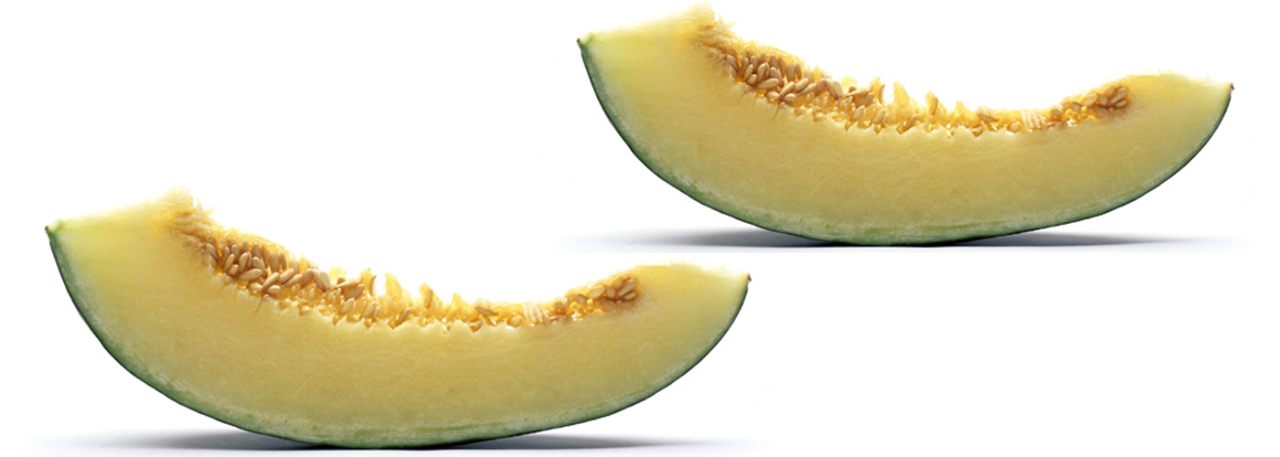.png.transform/rendition-xs/image_image%20(1).png)
Melón de La Mancha PGI
Melons of the botanical variety ‘saccharinus’ and of the cultivars ‘Piñonet’ or ‘Piel de sapo’ in any of their commercial varieties, sold to consumers fresh.
Tasting notes
From a sensory point of view, the main characteristics are its sweetness, its juiciness and the low level of fibers in its flesh. The skin can be smooth or slightly rough and is between 0.6 and 0.8 cm / 0.2-0.3 in thick. It is netted or has grooves of varying intensity that run lengthways, and this is usually more abundant around the stalk area and the scar left by the stigma. It is mainly green in color with some medium-sized shadows that are distributed uniformly and turn yellow as it ripens. The flesh is white or cream-colored. The placental zone is in the central cavity, which is orange-colored and relatively small in comparison to other varieties; the seeds are here.
Other notes
The protected geographical indication only applies to Category I melons, with a minimum sugar content (refractive index of the pulp) of 11° Brix (± 0.5°) and a unit weight of between 1.8 and 4 kg (± 0.1 kg.)
Melons of the ‘Piñonet’ or ‘Piel de sapo’ variety are elliptical or oval in shape.
Production / Processing method
The first work is done in October or November at a depth of 11-14 in (30-40 cm). In February further work is done on the surface to crumble the soil. Once the soil is ready, the parcel is marked out to show the distance between planting rows.
Planting out is done between mid-April and early July when the seedlings have at least one well-developed true leaf. Planting out is done by hand.
Tasks during the growing cycle include watering, fertilizing, weeding and clearing, as well as removing fruit from plants that have too many.
Harvesting is done by hand. The melons are placed along the rows to be collected later with a trailer. The frequency of the harvest varies from two to three times a week when the weather is warm to once a week when the weather is cooler. Harvesting starts in mid July and ends in October.
Once the fruit is collected, it is taken to handling and packing plants and stored under cover. The melons are unloaded and then weighed, each batch is identified and the result of the quality control is recorded. The melons are always stored undercover at room temperature with enough humidity and ventilation.
The calibration of the protected melons is determined by their weight, between 3.97 and 8.82 lb (1.8 and 4.0 kg). Depending on their size, the melons are packed and presented for sale in wooden or cardboard boxes.
Melón de La Mancha melons can be stored for a maximum of 45 days after the cutting date.
Geography / Relief and climate
The La Mancha plain is a sedimentary basin which is almost perfectly horizontal and flat with the exception of a few hills that stand out slightly. The arable land has quite shallow soil, no deeper than 13.7 in (35 cm), which is not very fertile, with low levels of organic material and high pH values. The soil is sand or sandy loam, which is very permeable with a high mineral content and the subsoil consists of a stony limestone layer which is porous and easy to work.
The climate is Mediterranean, with hot summers and cold winters, with wide-ranging temperatures differences between day and night and between the different seasons of the year. The growing area has rainfall of between 300 and 400 mm with high levels of radiation and evapotranspiration in the summer, when temperatures hardly vary between day and night and relative humidity is low.
Melón de La Mancha melons can be stored for a maximum of 45 days after the cutting date.

